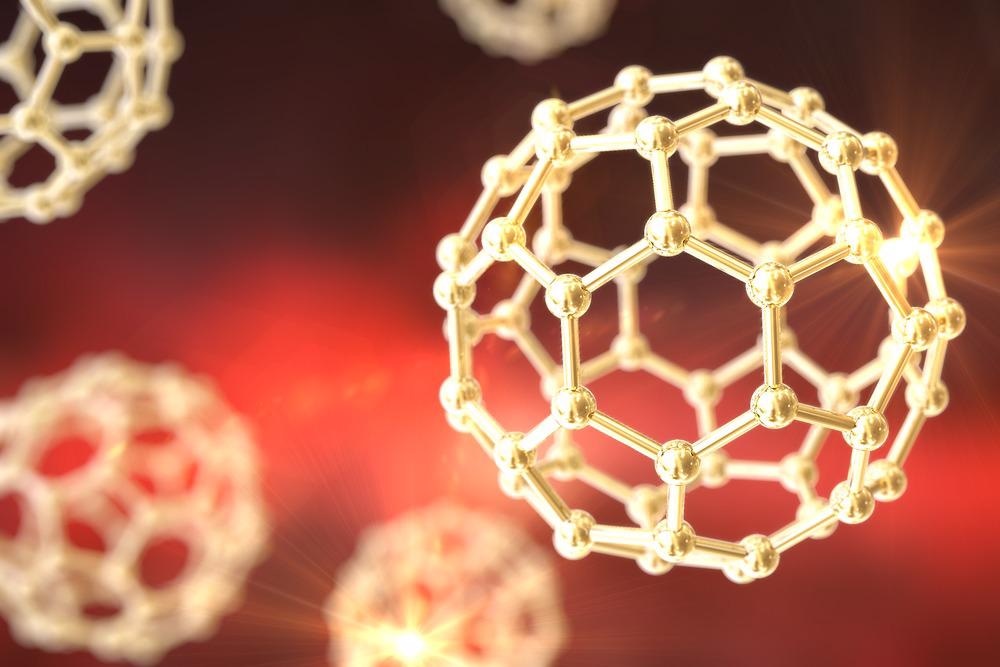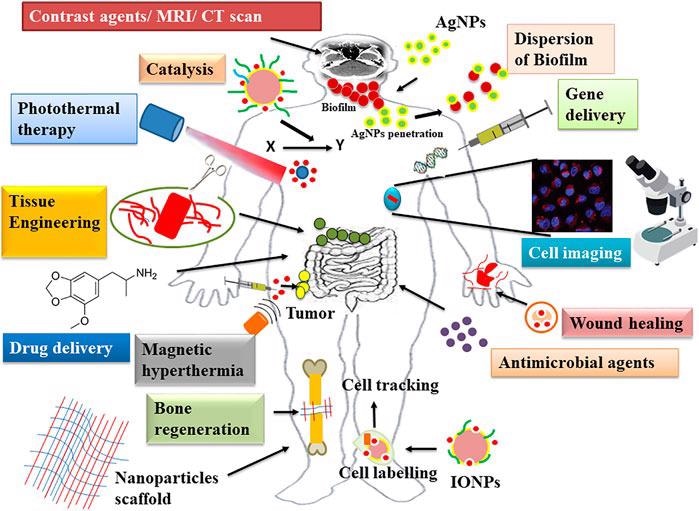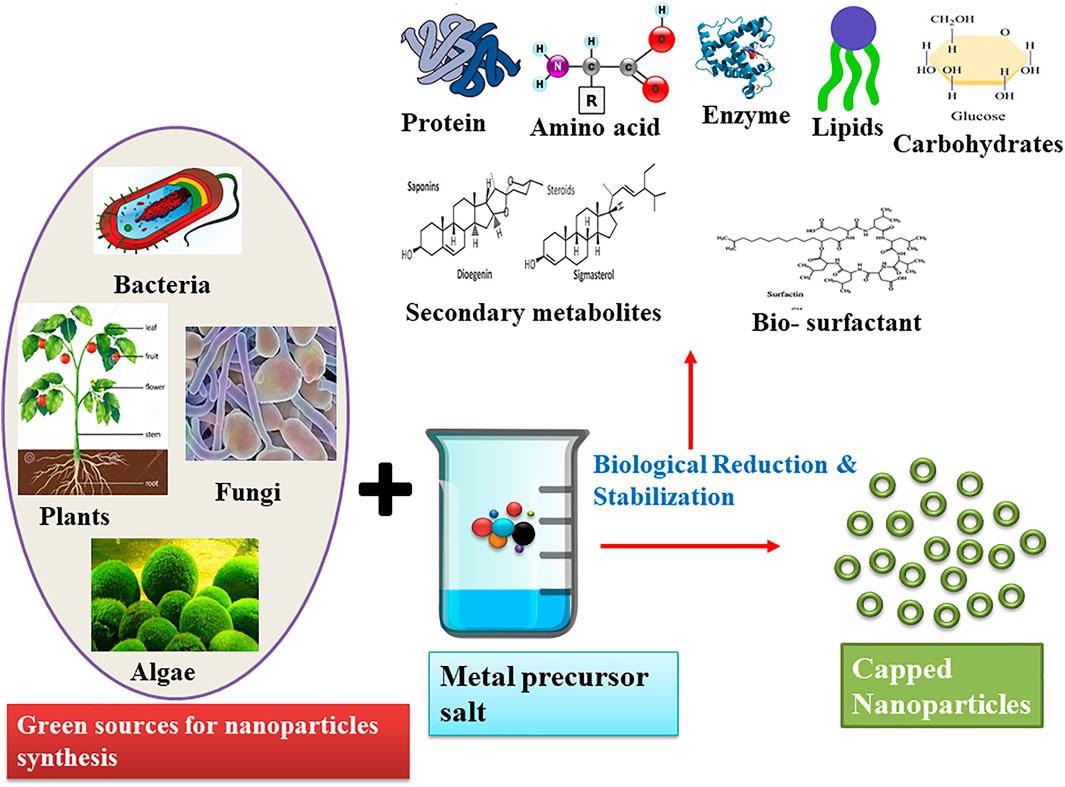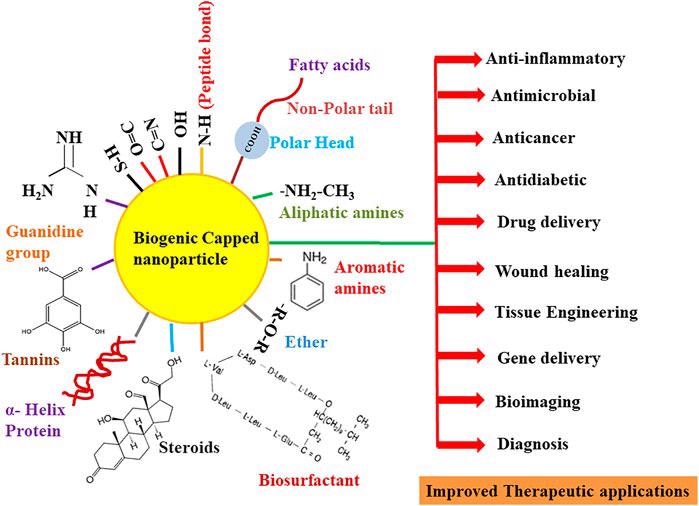A review article published in Frontiers in Nanotechnology has provided a comprehensive report for an alternative capping agent within green metallic nanoparticle synthesis.

Study: Role of Biogenic Capping Agents in the Synthesis of Metallic Nanoparticles and Evaluation of Their Therapeutic Potential. Image Credit: Kateryna Kon/Shutterstock.com
With recent traction in nanoparticle synthesis and surface manipulation, the use of these biogenic capping agents can aid in creating nanoparticles that are non-toxic with surface functionalization.
Significance of Biogenic Capping Agents
The demand for nanoparticles, which are within 1 and 100 nm in size, for use in various industries from electronics to renewable energy and medicine, has brought into question its sustainable synthesis methods.
Its highly attractive physicochemical properties such as large surface area and increased reactivity have increased its popularity for industries; however, the high usage of toxic solvents and hazardous chemical capping agents and their subsequent impact on the environment has increased traction towards alternative ‘green’ synthesis.

Figure 1. Biomedical applications of nanoparticles. © Sidhu, A., Verma, N. and Kaushal, P., (2022)
Capping agents or binding molecules are usually utilized within minute quantities when creating nanoparticles, with these agents being involved with modulating surface chemistry, size distribution, as well as preventing agglomeration and aiding in the formation of complex structures with metallic ions in precursor salts.
The use of chemical capping agents within conventional nanoparticle synthesis methods involves the use of harmful chemicals that are damaging to the environment. This also includes the biological method which also involves chemical capping agents such as surfactants, polymers, and thiols.
While chemical capping agents have strong interaction with the surface of metallic nanoparticles and provide effective stability, their disadvantages such as being difficult to detach from the surface, nonbiodegradable and toxicity, decreases their desirability.
Additionally, with the growth and demand of nanoparticles increasing for several applications within various industries, the requirement of sustainable synthesis approaches is critical.
Green synthesis also requires green capping agents which would involve naturally occurring reducing and stabilizing agents such as carbohydrates, proteins, amino acids, lipids, honey, nucleic acids, and biological extracts including, plants, bacteria, viruses, and fungi.
The use of green synthesis methods including green capping agents ensures nanoparticles can be created using biodegradable, bio-soluble, well-dispersed capping agents that are non-toxic for all living systems.
Synthesizing Metallic Nanoparticles
This novel approach to producing nanoparticles ensures the result includes reliable, sustainable and environment-friendly particles which would provide an alternative for laboratories using harmful and unsustainable synthesis processes.
Biogenic capping agents which would allow for the control of growth, agglomeration, as well as chemical and physical characteristics, are significant for the synthesis of metallic nanoparticles.
Proteins
An example of an effective green capping agent includes proteins, a source of functional groups which is distinctive and effective in surface functionalization in nanoparticles.
With collagen being one of the most abundant animal proteins used as a capping agent in nanoparticles within previous research, this candidate can be effective due to being biodegradable and sustainable.
Additionally, with properties including self-assembly and cross-linkage, researchers have concluded its efficacy when synthesizing silver nanoparticles through the use of type 1 collagen as a reducing and stabilizing agent.
The results comprised collagen-based suspension of silver nanoparticles which illustrated no aggregation of nanoparticles in comparison to aggregates being seen in the control group, which consisted of citrate suspension.

Figure 2. Schematic representation of the green synthesis of nanoparticles and their biological reduction and stabilization by various molecules. © Sidhu, A., Verma, N. and Kaushal, P., (2022)
Amino Acids
These positive results were also similar to other biogenic capping agents, such as amino acids, which include histamine as a very significant and prominent reducing agent for gold chloride acid and a capping agent for gold nanoparticles.
Transmission electron microscopy (TEM) results had illustrated a direct correlation between the increase in histadine concentration and a decrease in the size of nanoparticles – concluding the increased use of histidine would prevent aggregation of gold nanoparticles.
Fungal Extract
Interestingly, fungi can also be used as a green capping agent, being an easy to use, abundant source of proteins, as well as providing a high yield of nanoparticles and reduced toxicity.
This biological extract can be used as a reducing and stabilizing agent when synthesizing metallic nanoparticles.
The use of fungi and the biomolecules present can provide nanoparticles with a coating, with benefits such as increased stability, inhibition of agglomeration, as well as increasing the biological activity of nanoparticles.
An example of use within the literature includes yeast as a reducing capping agent for the production of monodispersed and silver nanoparticles.
Future Outlook
The potential of green capping agents is monumental but further research would be required to comprehend which biogenic capping agent is most effective for synthesizing metallic nanoparticles.
This is significant for the translation of potential therapeutics that would benefit from metallic nanoparticles such as silver and gold nanoparticles, which have demonstrated efficacy for biomedical applications with high antimicrobial activity, including the production of reactive oxygen species that aid against bacteria, fungi, and viruses.
Additionally, with the use of collagen-capping zinc oxide nanoparticles, previous research has illustrated cytotoxicity against normal murine macrophages as well as human liver cancer cells.
This shows the potential of metallic nanoparticles for cancer therapeutics with the use of a green capping agent proving that biogenic capping agents can also be effective for metallic nanoparticle synthesis.
While further research would be required to gain more perspective in efficacy differences of biogenic capping agents and chemical capping agents, the potential to use this greener alternative has a highly sustainable benefit for living systems as well as the environment.

Figure 3. Overview of the role of various functional groups of biomolecules in the capping and therapeutic improvement of nanoparticles. © Sidhu, A., Verma, N. and Kaushal, P., (2022)
Reference
Sidhu, A., Verma, N. and Kaushal, P., (2022) Role of Biogenic Capping Agents in the Synthesis of Metallic Nanoparticles and Evaluation of Their Therapeutic Potential. Frontiers in Nanotechnology, 3. Available at: https://www.frontiersin.org/articles/10.3389/fnano.2021.801620/full
Further Reading
Guilger-Casagrande, M., Germano-Costa, T., Bilesky-José, N., Pasquoto-Stigliani, T., Carvalho, L., Fraceto, L. and de Lima, R., (2021) Influence of the capping of biogenic silver nanoparticles on their toxicity and mechanism of action towards Sclerotinia sclerotiorum. Journal of Nanobiotechnology, 19(1). Available at: https://doi.org/10.1186/s12951-021-00797-5
Singh, J., Dutta, T., Kim, KH. et al. (2018) ‘Green’ synthesis of metals and their oxide nanoparticles: applications for environmental remediation. J Nanobiotechnol 16, 84. https://doi.org/10.1186/s12951-018-0408-4
Disclaimer: The views expressed here are those of the author expressed in their private capacity and do not necessarily represent the views of AZoM.com Limited T/A AZoNetwork the owner and operator of this website. This disclaimer forms part of the Terms and conditions of use of this website.